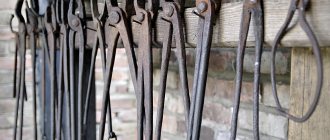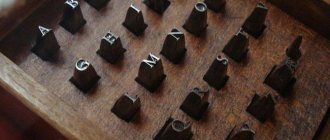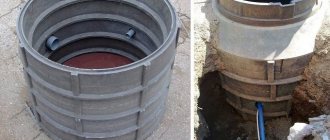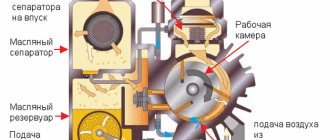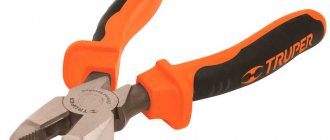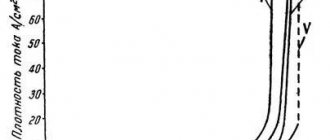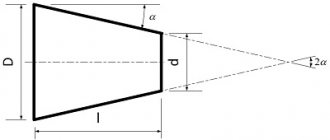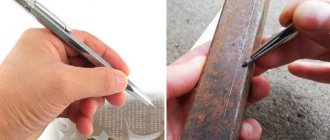Pliers and pliers are common and sought-after tools both at home and among professional craftsmen.
Meanwhile, many people confuse pliers with pliers, not seeing much difference in them. Below we explain the difference between pliers and pliers and which of these tools is the most popular and versatile.
Pliers by type
Pliers vary in their purposes:
- with short jaws for a strong and firm grip
- with extended jaws
- with narrow (or thin) lips
- with curved ones - when working in hard-to-reach places
- with internal plastic linings to avoid damaging parts
- specialized, for working with wire
The working (inner) surface of the jaws is smooth or with small shallow notches - for better grip of the object. “Jaws” is the part of the tool that grips parts.
Pliers and pliers: what is the difference between the variations of pliers tools
The history of the appearance of devices of this group goes back at least to the era of the Greek gods. Since time immemorial, mankind has been familiar with blacksmith's pliers. Over time, changes occurred not only in human society, but also in tools. When exactly and by whom exactly the design of pliers, which are the prototype of modern products, was created is unknown. However, the undeniable fact is that the thing turned out to be incredibly practical and necessary.
Many people do not see the difference between pliers and pliers, since they look very similar.
Modern pliers tools are characterized by great diversity.
The main variations that are presented to consumers are:
- mites;
- round nose pliers;
- wire cutters;
- pliers;
- pliers.
Each of the above categories has subtypes that differ in such parameters as the size of the working surface, shape, and purpose. For example, round nose pliers are best suited for cutting cable cores.
On a note! The cone-shaped shape of the tool provides comfort when bending cable cores.
Pliers are considered a more functional tool than pliers.
Different shapes of the cutting part and its different dimensions dictate the operating characteristics of the cutters. For example, products designed for repairing electronic devices are characterized by smaller sizes. You should know that they are completely unsuitable for cutting cables for various purposes, as this is inconvenient and impractical.
To perform work related to delicate materials, special attachments are used - plastic or made from other raw materials. The presence of notches on the pliers allows for maximum reliability in fixing the part during the soldering process of boards. At the same time, the special shape and angle of the jaws make it possible to get into the most inaccessible areas.
Differences between pliers and pliers
Pliers are a metalworking tool that looks similar to pliers. Some versions - which can no longer be confused with pliers - use an adjustable hinge mechanism. The jaws of standard pliers are usually shorter than the jaws of pliers.
The name “pliers” is French, literally meaning “to clamp the rod.” And in order to clamp it tightly, on the inside of the edges, which are always corrugated - with notches, there is an oval or round depression, often two.
Pliers and pliers: what is the difference between the tools
Being an indispensable attribute of electricians and occupying a worthy place in the work suitcases of mechanics, as well as many other craftsmen, pliers and pliers have deservedly received the title of the most popular tools. However, no one really notices the differences between them, since the instruments look very similar. But there are still differences, and quite significant ones. It is not without reason that for each of them there are separate technical requirements and GOSTs.
Metal shears: manual, electric, tools overview (read more)
Pliers are used in a variety of applications.
Their metal is good too
Higher quality and the metal from which the pliers are made. If carbon steel of a certain grade is used to produce pliers, then chromium is used in combination with molybdenum or vanadium to produce pliers.
Goebbels: features and distinctive features of the instrument
Goebbels are a tool that is a type of pliers that is used by both amateurs and professionals. They are often used in pairs, and in a wide range of tasks - from installing plumbing to repairing vehicles.
According to the standard, all adjustable pliers are made from special tool steel, which is characterized by the presence of vanadium and chromium in its composition. Thanks to this, they acquire qualities identical to those of wire pliers, which allows them to perform work under voltage. During their manufacture, not only stamping is used, but also forging elements. In this case, key parts (head and fasteners) are ground.
Goebbels are made from steel, which contains chromium and vanadium.
As for the handles, they often occupy no more than 40% of the total length of the product. They are coated with a special compound that prevents slipping. This not only increases comfort while working, but also protects your hands from injury.
The head of the Goebbels, like a similar part of the pliers, is that part of the product that can have different levels of inclination, amounting to 90 or 45 degrees. Regardless of the value of this parameter, it is always quite narrow and relatively long. Due to the presence of a special recess in it, you can easily carry out work even in narrow and inconvenient places.
Depending on their design, Goebbels are divided into two main groups:
- With rack type of jaw spread. This structure is characterized by simplicity and reliability. It is represented by two parallel slats with teeth, between which the axis of the product moves easily and can be fixed by the master.
- With grooves for spreading the jaws. The design feature is the presence of an overhead milled cardan joint. For the purpose of breeding sponges, straight-line movements are used. As a result, a fastening is formed that prevents the hinge from slipping.
Professional Goebbels from the NWS brand are characterized by high quality parts.
When performing work at significant heights, the best solution would be to use a tool with a special loop designed to secure the wrist. This eliminates the possibility of the product falling at the most critical moment due to a careless grip. When working with plastic pipes or ceramics, it is better to give preference to sponge attachments, which will provide reliable protection to the surface of the part from various damages.
On a note! The modern market presents many models from different manufacturers. The well-known company for the manufacture of professional Goebbels and pliers NWS deserves special attention. The high level of quality of the brand's products is confirmed by the special Solingen marking.
In addition, you can find products whose homeland is Sweden or Germany. They are also distinguished by high quality materials, ergonomics and modern design.
Dimensions according to GOST
The sizes of pliers vary. There are “miniature” categories - for delicate and precise work, for example, bench modeling or beadwork - 10 centimeters.
The dimensions of tools for installation, plumbing, automotive and other work are specified in GOST 17 438-72. For pliers of the first group, he defines the length as 160, 180 and 200 mm.
The second group, intended for industrial work, fits into three types of lengths - 200, 250 and 300 mm.
Imported products, made in the EU, USA and China, come in sizes 10; 11.5 and 14 cm.
What types of pliers are there?
Different types of pliers are used in production and everyday life:
- Universal
- Dielectric
- Combined
- Extended
- *Adjustable, sometimes called tubular
- For eyelets
If you compare photos of pliers of all the listed types, the differences are immediately obvious. Their main functions and purposes are listed below.
Photo of pliers
Read here! A set of bits for concrete - how to choose the best drill rings and features of their use. TOP best options for a master!
Pliers for all occasions
Universal pliers, or as they are also called - metalworking pliers, are often incorrectly called pliers. After the finely corrugated jaws, they always have a serrated notch. It is followed by side cutters - for cutting the wire, and next to the hinge there are cutters for cutting through stronger wire, nails and even chain-link mesh.
Type of pliers
Combined
Today, one of the most popular types of such tools is combination pliers - they are designed for manipulating and cutting wire and other parts. In Russia and other CIS countries, it is customary to make devices from tool steel, which is hardened in a special oil.
The working surface is also processed under the influence of high-frequency currents, which means the device can be used for operation in electrical networks.
Adjustable
Adjustable pliers (with lock) are an excellent option for home use, which is also used in industry.
Among the features, we note durable hardened steel, mainly rubberized handles and a working surface - its coating is created by exposing the material to electrolytes and electric current.
Isolated
The handles of the insulated pliers are coated with non-conductive material. With the help of such a tool, it is possible to work in live electrical networks without harm to humans. This device has no other features.
Lateral
In fact, side pliers should be classified as wire cutters. They have a hardened steel cutter that allows you to cut through objects made of various materials. Convenient to work with wires, wires, plastic or metal parts.
You need to understand that this type of tool will not cope with harder materials, such as steel.
With nylon tips
Pliers with nylon tips are a practical solution for those who are careful with things. The working part of the tool is protected from scratches and will serve its owner longer.
This type of tool is suitable for those who make jewelry, but also copes well with ordinary household purposes. It is recommended to buy a product with several attachments at once.
With plastic jaws
Pliers with plastic jaws are ideal for straightening wire, or working with fragile material that you don’t want to deform or scratch. Of the nuances, we note that usually such devices are not reinforced, and therefore operating them with tight, rigid parts is not the best idea.
For work on electronic components
If we are talking about pliers for electronics, then it is recommended to buy a set of such tools. The devices are small in size and have thin tips on the working surface. They are convenient for grasping small parts and manipulating them.
Pliers for eyelets
Eyelets, plastic or metal, are intended for strengthening holes in shoe, leather goods and other industries and workshops.
In view of this, “eyelet” pliers are a highly specialized and highly professional tool. They differ from other pliers in their specific appearance and are easily recognizable.
Pliers for plumbers
Plumbing pliers are the largest among pliers. They are used exclusively for plumbing work. To grip large-diameter gas or water pipes, these tools use an adjustable hinge mechanism. Thanks to this, you can change - increase or decrease the diameter of the gear recess.
Pliers and pliers: secrets of a successful choice
At the first stage of choosing tools, it is necessary to determine what specific tasks they are intended for. This need is due to the fact that some models can be used to perform a variety of jobs, while other products are characterized by a narrower specialization.
When purchasing pliers or pliers, it is recommended to give preference to trusted manufacturers.
Once the type of instrument has been determined, a little personal research needs to be done. To do this, you can read specialized reviews, watch videos, and also compare pictures of pliers and pliers manufactured by certain companies. Among other things, it should be remembered that products may vary in metal composition, handle finish, weight, degree of comfort in grip, performance and design.
On a note! If financial possibilities allow, it is better to give preference to professional tools.
And this is not a whim at all, but a real advantage of professional products over amateur ones. It will certainly be very disappointing to be left without pliers in the midst of work, or to throw away the side cutters after a dozen pieces of wire have been bitten off due to their unsuitability. As for the professional set of pliers, it will last a long time for everyday use.
It is better to buy professional tools, even if you plan to use them only at home.
In the selection process, the hinge also deserves special attention. There should be no backlash on it. If the stroke is soft, smooth, the surfaces touch evenly, and the handles on the handles are located securely and there is no free sliding, then you have found a truly high-quality product.
In many cases, pliers can be a completely worthy replacement for other tools. Before you go shopping, you should be as clear as possible about what tasks you plan to use them for.
The modern tool market has a huge assortment of pliers, the price of which varies depending on the type of product and manufacturer. Thus, each master has the opportunity to choose the optimal tool that will become a reliable assistant in the process of performing certain works.
